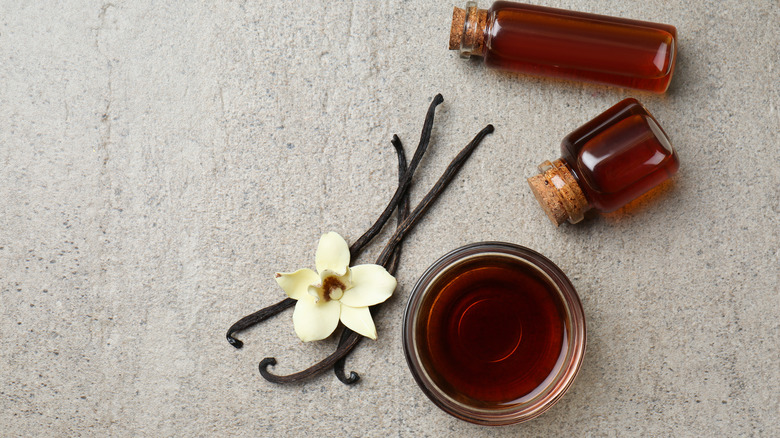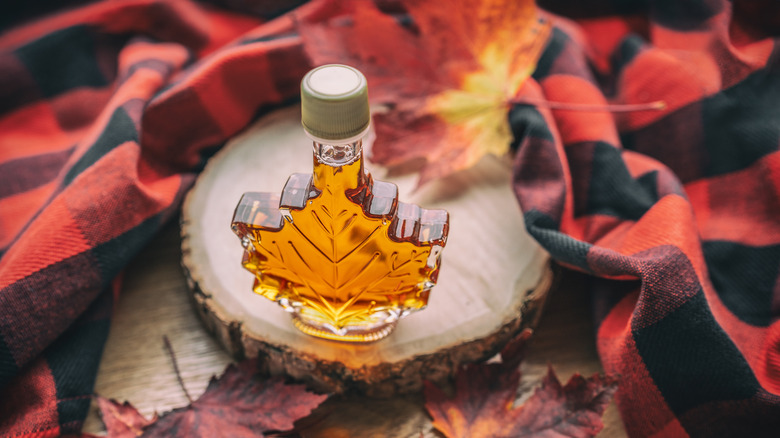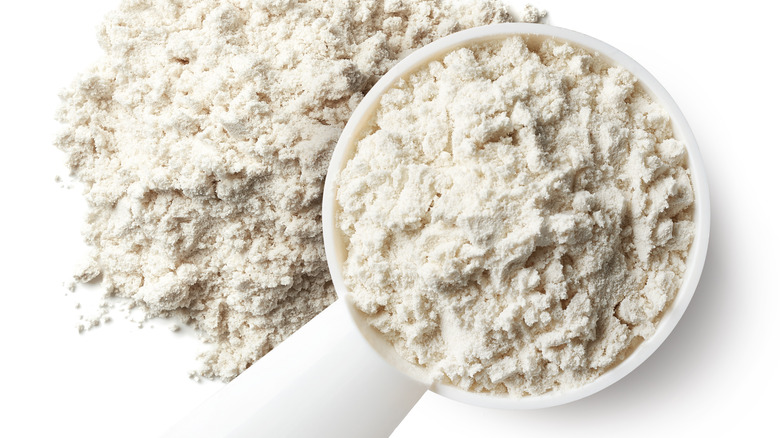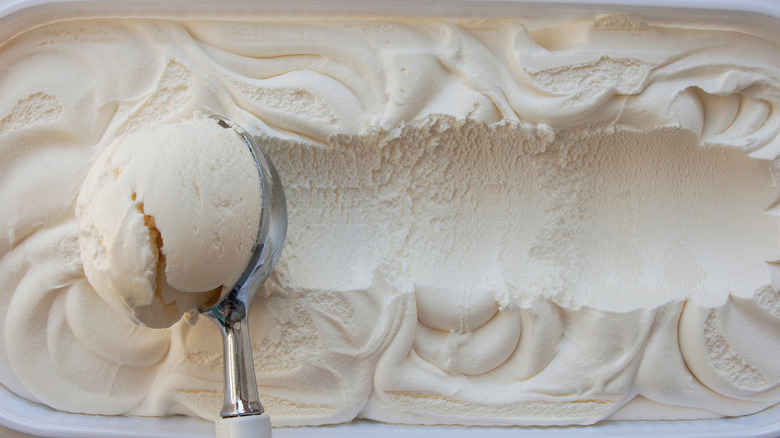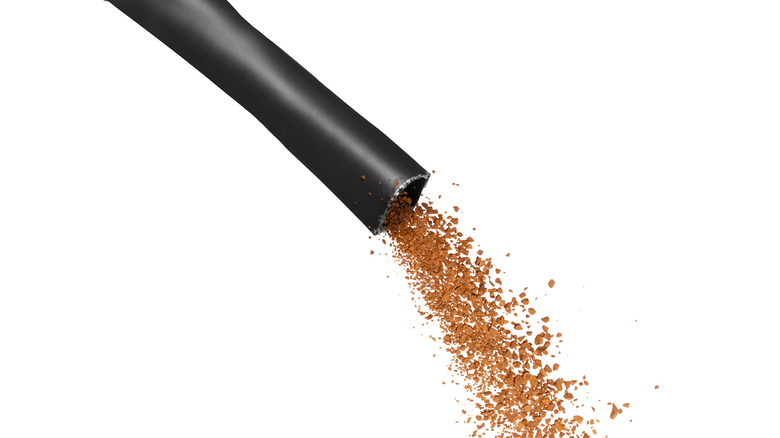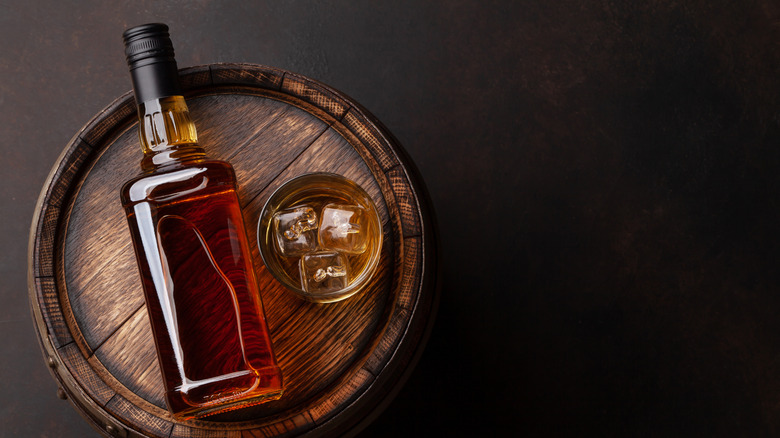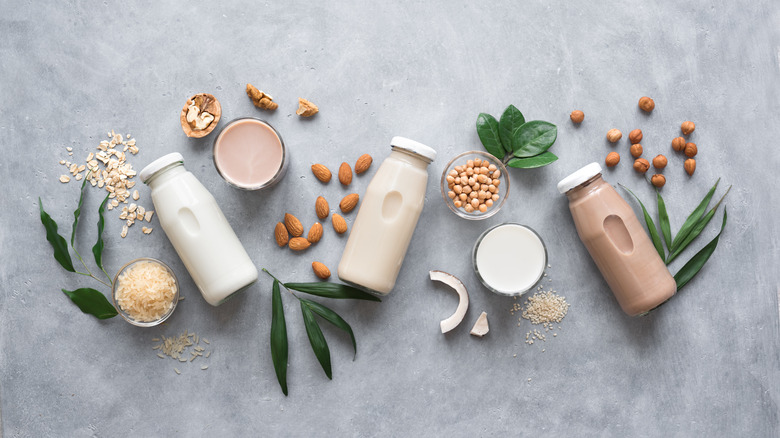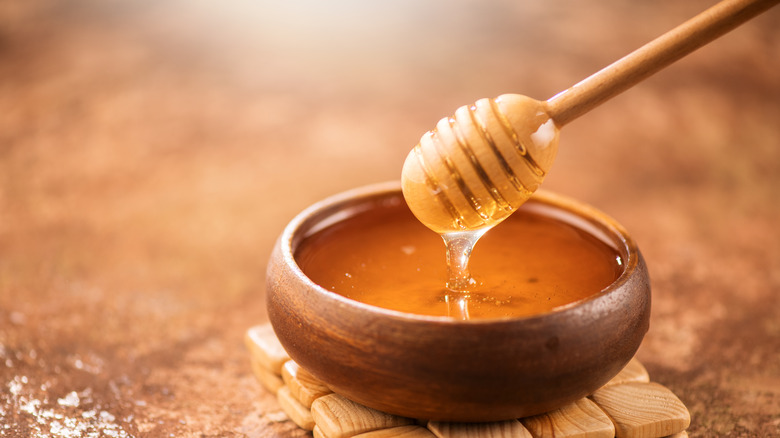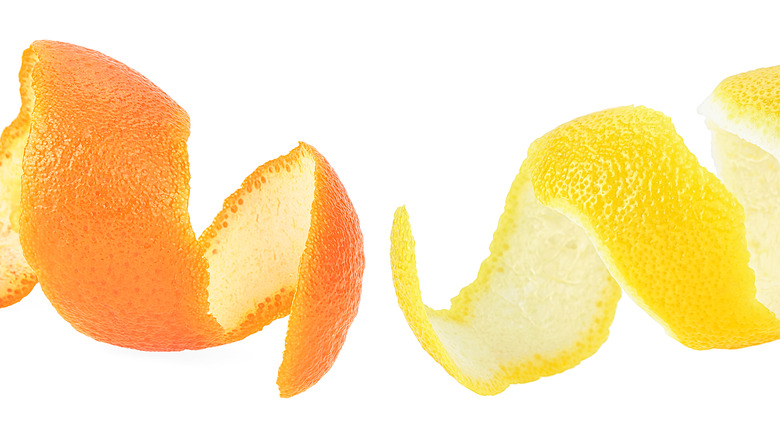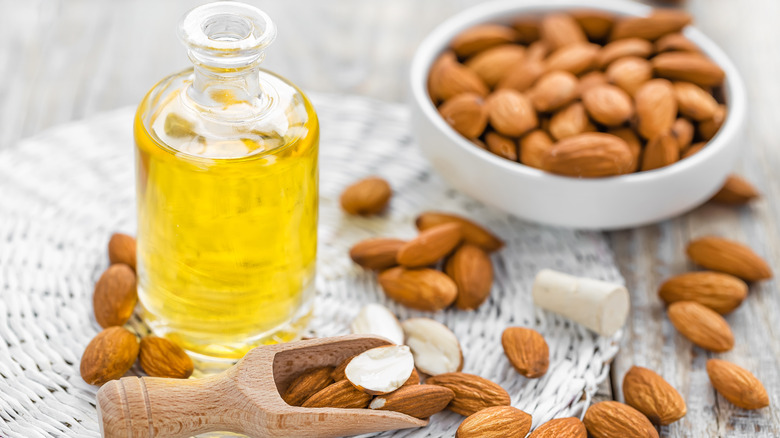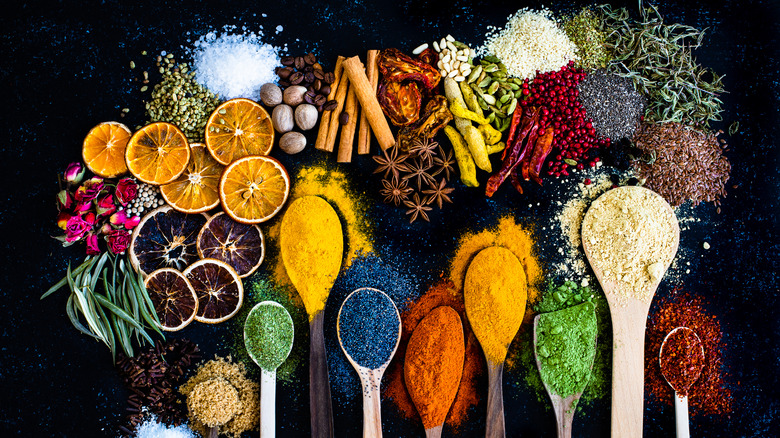10 Best Substitutes For Vanilla Extract
Raise your hand if you knew that vanilla, when grown in nature, visually resembles a green bean. Anyone? We didn't know, either. Turns out vanilla, or vanilla planifolia as it's officially known, is part of the orchid family of plants (via HuffPost). The part of vanilla we use, the pod, grows out in little clusters that look like wee green beans.
That's where it gets interesting. After harvesting (before the pods are ripe), the manufacturer plunges the pods into hot water, then lets them dry for two to six months. After the drying process, the vanilla either is sold whole, as beans, or squished and mixed with water and alcohol to make vanilla extract. In a video on YouTube, a processor at Nielsen-Massey explains that milling splits open the vanilla pod so the alcohol/water solution can brush up against all that vanilla goodness. After the pods are milled, a machine pulls or "extracts" the vanilla essence into liquid form, using water and alcohol to preserve the product. That's where you get vanilla extract, which adds a hint of sweet vanilla to baking and generally enhances the flavors of every ingredient around it.
As Spices Inc points out, not all vanilla flavoring in grocery stores actually contains real vanilla, but when it does, it's usually made from Madagascar beans, which have a creamy, flavorful taste. That's why vanilla extract is a key component of your favorite desserts: chocolate chip cookies, brownies, cakes, and ice creams. If you run out of vanilla extract (which seems to happen a lot), we have you covered with these 10 great substitutes.
1. Maple syrup
The flavor profile of maple syrup is very close to vanilla, which is why it works so well as a substitute for most baked good recipes. Using maple syrup in recipes is hardly a new concept, as the ingredient features in many sweet treats. The replacement most likely won't affect the scent of your baked goods, but maple syrup is sweeter than vanilla, so you might want to decrease the amount of sugar elsewhere in the recipe.
To make the switch, use pure maple syrup (or even pancake syrup if you don't have pure syrup on hand) in a 1:1 swap.
2. Vanilla powder
Starbucks wouldn't steer you wrong. If the popular coffee company is regularly using vanilla powder to accent its products, maybe you should give it a try. Vanilla powder, made by crushing vanilla beans, can work in any number of dishes, from baked goods to ice cream, or milkshakes (via Food Republic). Vanilla powder doesn't add any liquids to a recipe, unlike vanilla extract, so be certain this addition won't throw your recipe off. Also, check the ingredient list of vanilla powder before adding it to savory or meat dishes (added sugar may alter the taste).
Vanilla powder can be substituted for vanilla with a 1:1 ratio — that is, use the same amount of vanilla powder as vanilla extract.
3. Vanilla ice cream
If a frozen dessert is on the menu, you may already be halfway there. Try subbing vanilla ice cream in place of vanilla extract in your frozen or baked dessert recipe, Don't Waste the Crumbs says. The sky's the limit here, as you can use frozen soy, oat, almond, coconut, or other milk alternatives as "ice cream." If you're making a frozen dish, vanilla ice cream works well in the recipe. For baked goods, the cream and vanilla will add to the richness of the dish. It would be best to avoid trying this substitute if you were making a meat or savory dish since the sweetness of the ice cream would compete too much with it.
You can use approximately an equal amount of vanilla ice cream for vanilla extract in a recipe.
4. Instant coffee or espresso powder
If you're making a chocolate dessert, you can absolutely add instant coffee or espresso powder instead of vanilla extract. Ina Garten herself is a fan of adding instant espresso to her baked goods to heighten her outrageously delicious brownies. The coffee works to make the chocolate taste even more decadent and, well, chocolatey. Here, the coffee or espresso is doing the same enhancement work that vanilla extract usually does.
Don't go overboard here: You won't need to add a lot of espresso powder to elevate the dish. A pinch is fine to replace the vanilla extract.
5. Bourbon, brandy, or rum
Okay, so here's the thing: Most vanilla extract contains alcohol. To create the extract, makers steep vanilla beans in alcohol to get its rich taste and aroma, per Vanilla Bean Kings. Swapping in bourbon, brandy or rum can work for your recipe without changing the flavor and texture too much. The Pioneer Woman says that bourbon naturally has a vanilla flavor that can work well in your baked goods. For those worried about the alcohol content in the finished product, if you're baking, the spirit will dissipate during the cooking process.
To make the switch, use a 1:1 swap with bourbon, brandy, or rum in place of the vanilla extract. Moreover, as long as the recipe you are making is baked, the alcohol will cook out leaving you with all of the flavors, and none of the booze.
6. Vanilla-flavored milk
Rejoice in your plant-based milk! If you have vanilla-flavored plant-based milk in your fridge, you can use it in place of vanilla extract in your recipe, per Don't Waste the Crumbs. You can do just about anything with this, as any kind of milk will work, such as soy, pea, almond, coconut, etc. The amount of sugar in a dish won't make much of a difference if you're making a sweet treat, but if you're making a savory dish or a meat dish, you might find the sweetness to be distracting from the dish. For savory dishes, use unsweetened vanilla milk. Better yet, if your recipe calls for a milk or water component, your vanilla-flavored milk can be used instead.
You can use approximately an equal amount of vanilla-flavored plant milk for vanilla extract or in place of the vanilla extract in a recipe.
7. Honey
While it's true that the flavor profiles of honey and vanilla don't share many similarities, you can make the switch if you're out of extract. The Pioneer Woman stresses that the type of honey matters here, go for the more flavorful varieties like manuka or perhaps the new macadamia nut honey from Trader Joe's.
The Asheville Beekeeper counts leatherwood honey and sage honey as some of the best in the world; if those aren't readily available, seek out uniquely flavored and minimally processed varieties.
Swap out honey for vanilla in the same amounts as called for in your recipe (via Picky Eater Blog) — but the blog cautions that you might need to adjust the amount of sugar to your recipe, as honey is super sweet.
8. Citrus zest
Sometimes you need to go another way. If you're out of vanilla extract, Taste of Home suggests using citrus zest instead. Before you start squeezing lemons or oranges, don't use the juice, though! Using a citrusy liquid will throw off the delicate balance of the recipe (way too acidic).
The blog maintains adding citrus zest will bring out "a fresh burst of flavor" in a recipe without adding more liquid to the dough (which can sometimes be a tricky process to adjust the dry ingredients to make up for the additional liquid).
9. Almond extract
If you can't get your hands on vanilla extract, try swapping out almond extract. The sweet taste of sugared almond can add a softly nutty taste to your recipe. This swap will work best in baked goods where vanilla isn't the most forward flavor in your dessert. That means if you're making a frosting or ice cream, you probably want to skip the almond extract this time around.
Leaf.tv cautions that almond extract is sweeter than its vanilla counterpart, so you should halve the amount used in the recipe. For example, if your recipe calls for 2 teaspoons of vanilla extract, use just one teaspoon of almond extract.
10. Choose your spice
In most recipes, vanilla acts as both a flavoring agent and a fragrance booster. While vanilla is rightfully thought of as a rock star ingredient, you can do the same with other ingredients that you might already have in your pantry. Swap nutmeg, cinnamon, chai mix, or cloves for vanilla, per Taste Of Home.
But why stop there? Cardamom is a much-loved spice in baked goods, but go for the unexpected with a pinch of rosemary, which can add a woody, peppery taste to your baked goods. You could also try basil, coriander, pepper, mint, or cumin for a fresh take on your recipe (via Lynchburg Mama).
Remember, when you're adding a new spice to your recipe in the place of vanilla extract, just start off with a pinch to boost the flavor.
